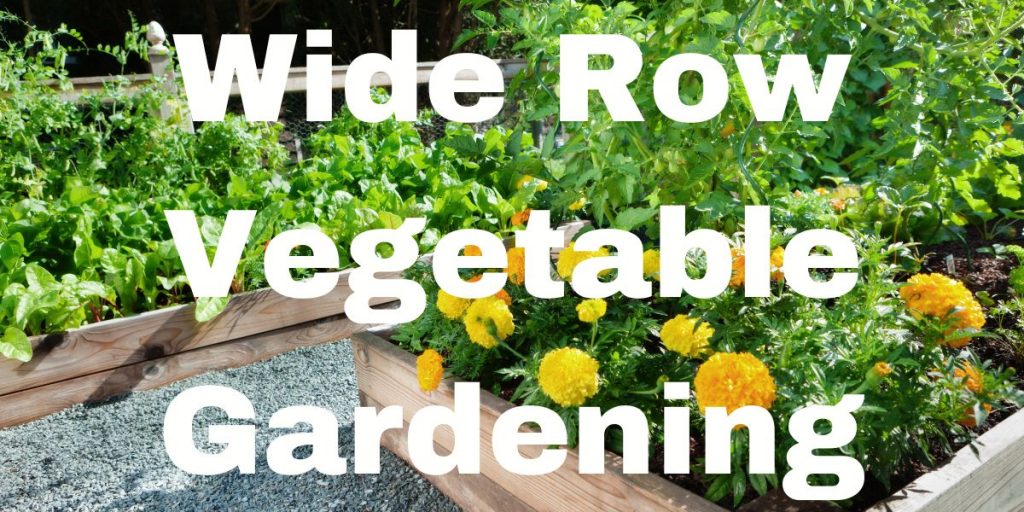Is space limited for a vegetable garden at your house? If so, wide-row gardening may be a practical solution. It is a way to produce an abundant quantity of vegetables in limited space.
Wide-row gardening means grouping several rows together, rather than planting in single rows. This reduces the amount of walking room between rows. In addition to saving space, it saves time, increases yield and makes harvesting easier.
Because we have limited space and want to utilize every inch that is available, we have used this method in our garden for several years. With the rising cost of produce we consider this to be especially important.
My vegetable beds are about four feet wide and 20 feet long. Here is an example of how much space this conserves: In one wide-row bed two feet long I can plant the equivalent of a 48-foot single row of garden carrots. Put another way, a bed four feet wide and 20 feet long seeded with carrots is the equivalent of 480 feet of carrots planted in a single row. Wide-row planting also means I can expect to harvest up to six times as much produce per foot.
I find that this method of gardening saves me a lot of time and it is important that I use my time to best advantage. Watering time is cut down because the lower foliage tends to shade the entire area and reduces evaporation. Also, because the crops are planted closer together, they tend to crowd out weeds. Fertilizer is conserved, too, because all the soil that has been prepared is utilized.
Using the wide-row method, more than one row is planted of a particular crop. For example, instead of planting a single row of bush beans, two are planted close together. To make the wide-row even wider, plant three, four, five or more rows close together. Spacing of plants in the rows will depend entirely on crops grown. Directions on the back of the seed packet will specify how close together that crop should be spaced.
I plant in four-foot-wide beds because it is easy to reach across this distance from each side for weeding, watering and harvesting purposes.
As in all vegetable gardening, the key to success is proper soil preparation. Take extra time to properly till or spade the soil to a depth of six to 12 inches. Mix in ample amounts of compost, if available, processed manure, well-rotted manure and an all-purpose vegetable garden fertilizer. After mixing these soil additives with the existing soil, rake the area level to eliminate low spots where water night collect and keep the soil cool. By mounding the planting area you will find the soil dries out and warms up sooner and crops reach maturity at an earlier date.
Plan the layout of the garden before you start planting, keeping in mind that tall-growing crops should be to the north. Otherwise, they would shade lower-growing plants.
This same type of wide-row vegetable gardening can be adapted for use in small areas such as flower and shrub beds. I have referred to this as intensified gardening, but it really is the same thing as wide-row gardening. Crops are planted very close together in various shapes to suit the particular space available.
Regardless of how you lay out the rows, here are some pointers to keep in mind:
First of all, when young seedling plants begin to develop be sure to thin them and space them properly. Otherwise, the crop will not grow and produce as it should. Second, don’t get over-anxious; wait until weather conditions are favorable for planting each particular crop.
If you want to save space and time, plus make it easier to harvest vegetables, wide-row gardening may be right for you this year.


Hi,
These are great tips! I’ve wanted to start a garden for a few years. This will definitely help me plan what and where we want it.
Thakfully. GardenHubs